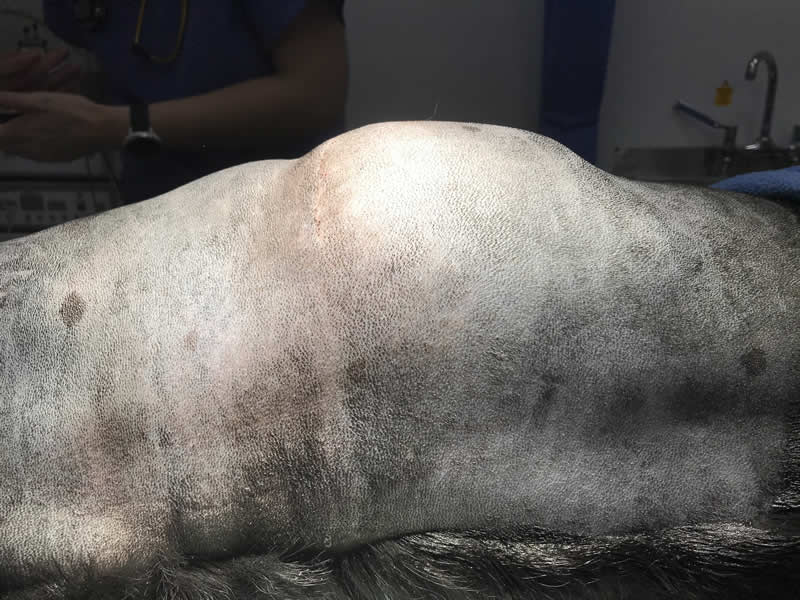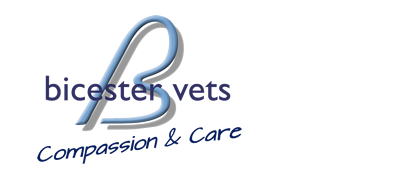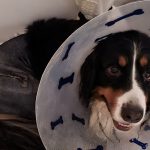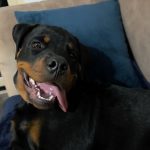Lewis is a very big, very strong & very “enthusiastic” visitor to Bicester Vets. At 40kg he’s probably a bit overweight, even for a tall male Labrador, but nonetheless he is fit and strong and in good health.
He is even a regular blood donor; which is a great service he does for his fellow canines (not that he actually has a choice) – but he seems very happy to give his blood with the same enthusiasm with which he approaches everything in life!

As Labradors age they often develop soft, fatty lumps (lipomas) which usually aren’t a problem for the dog. However, some of these lumps can grow to a very large size in which case they can become cumbersome for the dog to carry around and sometimes they can inhibit the movement of a leg. In these cases, it is usually sensible to remove the lump.
Lewis has suffered from a number of these lumps, many of which were small and inconsequential whilst others have become very large and problematic. Today Lewis came in for the removal of 2 fatty lumps. The larger of the two was the size of a bread & butter plate in diameter.
We had been monitoring its growth over the past 6 months and could feel that it seemed to be growing underneath his shoulder blade (scapula) which gave us cause for concern.
Lewis had a routine blood test in the morning to check that his blood count and organ functions were ok before anaesthetising him ready for surgery. As the surgery progressed it became apparent that the lipoma was located underneath some of his chest muscles and was tightly attached to his rib cage. It extended back towards his last rib and forward underneath the scapula as predicted.
Luckily the lump was well defined and separated from most tissues easily. There were some firm attachments to the ribs but once these were resected the huge fatty lump was removed. The lump must have weighed over a kilo and covered both my hands when holding it.
Once a mass like this is removed from between tissues it leaves a cavity which we call “dead space”. We want the tissues to heal themselves back together so that the space disappears but this isn’t always this straightforward.
Dead space, especially near a moving leg, has a tendency to get fluid build-up called a seroma which will slow the healing process. To reduce this risk, I placed a number of flat latex “drains” which are intended to create a track for fluid to escape from the cavity to the outside thus allowing the healing to continue.
Lewis was full of beans when he was collected this evening. He was wearing a medical pet shirt which is like a tight pet T-shirt. This will create some gentle pressure on the area as well as preventing Lewis from licking or chewing the wound & drains. All going well he’ll be back next week for the drains to be pulled out (just in a consultation). Then we’ll check him again a week later and hopefully that will be the end of this episode.
This is not the first time Lewis has had a large lipoma removed and unfortunately, due to his predisposition, it may not be the last. I always look forward to seeing Lewis and his owner at the surgery; they both have a great approach to life and are always in good spirits. Here’s hoping his wounds heal uneventfully and that his lipomas stay at bay for a long time!
Enjoy your Pets
Jason Williams
Bicester Vets



Building Plans for 2024
We have also commenced a major construction project externally which will add significantly to the facilities we can offer to our patients
Welcome to our NEW Reception & Waiting Room
Our aim was to make a beautiful space which we can all be proud of, but essentially, we needed to retain practicality and ergonomic design
Hip Hip Hooray for Ava
Ava is now seven months on from her surgery. She is very lively and is behaving like a puppy again!








